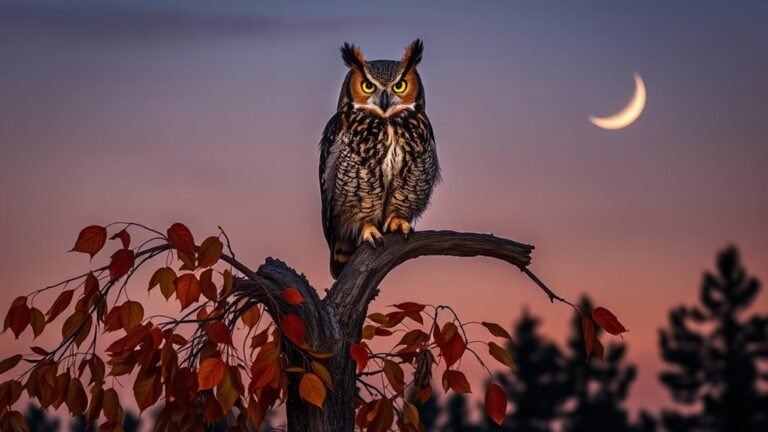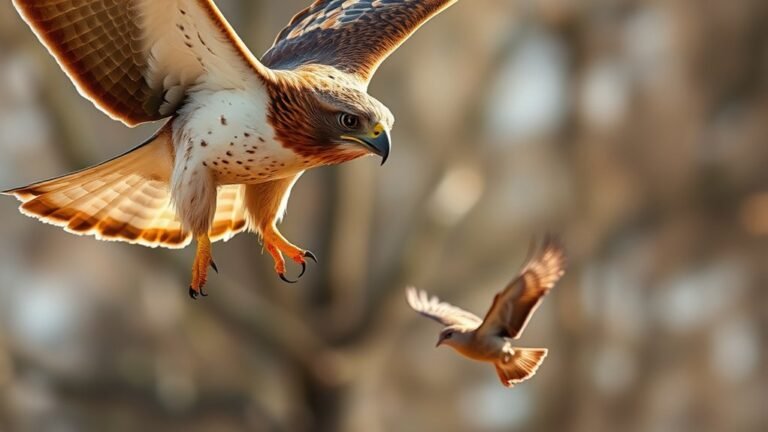Ducks in Texas: Species Overview
Ducks in Texas are colorful and interesting. The state has many types of ducks, each with their own special traits. For example, the Mallard is very common, while the Wood Duck is known for its bright colors.
These ducks live in different places and behave in unique ways. Their habits help show us the health of the wetlands where they live. As you learn about these ducks, you'll see how they fit into their homes and why it's important to protect them.
We should care about ducks and their environments, especially as things around them change. Ducks are not just birds; they are a big part of Texas's nature.
A Quick Overview
Texas has many types of ducks that live in different places like lakes, rivers, and wetlands. Some common ducks you might see in Texas are Mallards, Wood Ducks, Northern Pintails, American Black Ducks, and Gadwalls.
Every year, many ducks migrate to Texas. Ducks like the Northern Pintails and Buffleheads follow specific paths when they move.
Ducks eat a variety of foods. They enjoy aquatic plants and small animals, showing they can adapt to different environments.
Texas is a great place for birdwatching, especially during migration seasons. You can see many different duck species during this time. It's a fun way to enjoy nature!
Overview of Duck Species in Texas

In Texas, you can find many different types of ducks that live in fresh and saltwater areas. The wetlands in Texas are home to ducks like the Northern Pintail and the Wood Duck.
These ducks have special ways to survive in their homes. The areas where ducks live are important because they provide places for ducks to build nests and find food.
When it's time for migration, many ducks fly long distances to reach Texas. This state is an important stop for them on their journeys.
Knowing about these migration paths helps people protect the ducks. It shows how changes in the environment can affect them.
Mallard Ducks
Mallard ducks are colorful birds with bright green heads. They're very common in Texas. You can find them in lakes, rivers, marshes, and wetlands. These ducks can live in many different places, which helps them thrive all over the state.
Mallard ducks eat mostly plants, seeds, and bugs. They look for food on the water's surface and also dive a bit underwater to find snacks. Learning about what they eat can help you appreciate these lovely birds even more.
In cities, you might see mallard ducks in parks. They're good at adapting to both wild and urban settings. This helps you feel more connected to nature in your neighborhood.
Watching them can be fun and adds joy to your day.
Wood Ducks

Wood ducks are beautiful birds you can find in Texas. They stand out because of their bright colors and unique hairstyles. They like to live near wooded streams, marshes, and ponds. These places have lots of plants that give them both food and shelter. Wood ducks eat seeds, fruits, and small water animals.
Female wood ducks have a special way of making nests. They usually choose tree holes to lay their eggs and often pick places high up in the trees. This helps keep their eggs safe from predators. Sometimes, they travel a long way to find the best nesting spots.
Learning about wood ducks and their homes helps us appreciate these amazing birds even more. It also brings us closer to Texas's wonderful wildlife.
Northern Pintails
Many types of waterfowl live in Texas, but the Northern Pintail is special. This duck has a long neck and a pointed tail, making it easy to recognize. When Northern Pintails mate, they show off with cool moves and dances that help them bond with their partners.
During migration, these ducks fly long distances. They like to stop at wetlands and estuaries to rest. Their travel paths often go along the Central Flyway. This is great news for birdwatchers in Texas, who can see them during the best seasons.
Learning about where Northern Pintails go can help you understand their journey and the places they need to live. Watching these ducks can help you appreciate Texas' amazing wildlife.
It's important to protect their homes so future generations can enjoy them too.
American Black Ducks

The American Black Duck is a unique bird that adds charm to Texas wetlands. Here are some important things to know about them:
- Breeding: American Black Ducks like to build their nests in thick, bushy areas close to water. They hide them well with plants.
- Migration: When winter comes, they usually fly south. They often join other ducks and birds to find food together.
- Diet: These ducks eat mostly plants that grow in water and small bugs. They search for their food in shallow water.
- Habitat: They prefer places like freshwater marshes, swamps, and ponds. They do best in spots with lots of plants around.
These ducks play an important role in Texas's water ecosystems, making them a special part of the area.
Gadwalls
Gadwalls are a type of dabbling duck that lives in Texas wetlands. They've a simple yet pretty look, with gray and brown feathers that help them blend into their surroundings.
In the spring, during their breeding season, gadwalls find partners and choose thick plants to build their nests. You can often watch them perform fun courtship moves.
As fall comes, gadwalls migrate south to Texas to escape the cold northern winters. They can adapt well to different wetland areas, which makes them an important part of Texas's bird community.
Learning about their habits helps us see how they fit into nature.
Canvasbacks
Canvasbacks are beautiful ducks with striking red heads. They live in wetlands in Texas and prefer certain places to thrive. You can find them in:
- Shallow marshes and lakes.
- Areas with lots of underwater plants.
- Near bulrushes and pondweeds.
- Spots where they can rest safely from predators.
Canvasbacks eat mainly aquatic plants and seeds, and sometimes snails.
They're good at finding food using their special bills to get it from beneath the water.
Watching these amazing birds can help you appreciate the diverse ecosystems in Texas and how everything connects.
Redheads
Redheads are a type of duck you can find in Texas wetlands. They like shallow lakes, marshes, and estuaries where plants grow in the water.
Redheads dive underwater to find food. They eat plants, seeds, and small creatures.
During mating season, they show off with special courtship dances, which are fun to watch. When it's not nesting time, redheads usually hang out in loose groups. They're social ducks and enjoy being together.
Watching them interact in their habitat is a joy for bird watchers and wildlife lovers.
Learning about redheads can help you appreciate Texas wetlands even more. It's a great way to connect with nature and enjoy the wonderful ducks that live there.
Blue-winged Teal
Blue-winged teal are interesting ducks that you can often see in Texas wetlands. They've unique breeding habits and migration patterns that make them fun to learn about.
- Breeding Season: These ducks usually start breeding in the northern areas during late spring.
- Nest Locations: They like to build their nests in thick grass or reeds. This helps keep them safe from predators.
- Migration Routes: In the fall, blue-winged teal fly south to find warmer weather, traveling thousands of miles.
- Habitat Preference: They prefer shallow marshes, ponds, and flooded fields. Here, they look for seeds and small bugs to eat.
Learning about blue-winged teal can help you appreciate the important role they play in Texas's wetland ecosystems.
Green-winged Teal
Green-winged teals are charming ducks often seen in Texas wetlands. They like to hang out in shallow marshes and coastal areas. These small dabbling ducks eat plants and tiny water creatures.
When it's time for migration, green-winged teals travel in small flocks. They mostly fly south from Canada and the northern U.S. They often pick the early morning or late afternoon to fly, taking advantage of nice weather.
In Texas, you can see them during the fall and winter. They come here to find warmer spots.
Learning about where they like to live and how they migrate helps us enjoy watching these beautiful birds even more. They add to the variety of birds we can see in Texas.
Buffleheads
Buffleheads are cute little ducks that stand out with their striking black-and-white colors. You can easily spot them in Texas's ponds, lakes, and bays.
Here are some interesting facts about buffleheads:
- Where They Live: Buffleheads like both fresh and saltwater. You can find them in ponds, lakes, and even coastal areas.
- What They Eat: They dive into the water to find small bugs and crustaceans to munch on.
- Social Life: Buffleheads often hang out in pairs or small groups. Watching them play is really fun!
- Migration: These ducks travel from Canada to warmer places in the southern U.S. during the winter, including Texas.
Learning about buffleheads can help you enjoy watching these charming birds even more!
Common Mergansers
Common mergansers are beautiful ducks you can spot in Texas's lakes and rivers. They're skilled divers and love to swim underwater in search of fish, which is their main food.
With their sleek bodies and pointy bills, mergansers are well-equipped for catching fish. They can dive deep and hold their breath for about a minute. When they hunt, they usually go for smaller fish.
Sometimes, they team up with other mergansers to find food more easily. This teamwork helps them catch more fish and creates a friendly atmosphere among the group.
Learning about common mergansers can increase your appreciation for the wide variety of ducks you can find in Texas.
Frequently Asked Questions
What Habitats Do Ducks Prefer in Texas?
Ducks like different types of homes. In Texas, they enjoy wet places like marshes and ponds. These spots help them find food, build nests, and take breaks. Ducks can also live in cities where there are parks and small ponds. They are good at fitting into many places.
When Is the Best Time for Duck Watching in Texas?
The best time for duck watching in Texas is during the duck migration seasons. This usually happens from late fall to winter. During these months, many ducks come to Texas. You can see different kinds of ducks flying around and resting. It's a busy time for them, and that makes it exciting for you to watch! Grab your binoculars and enjoy the show!
Are There Any Conservation Efforts for Ducks in Texas?
Yes, there are efforts to help ducks in Texas. Groups are working to save habitats by restoring wetlands. They also teach people in the community about ducks. This way, everyone can enjoy the different types of ducks while ensuring they can thrive for years to come.
How Can I Attract Ducks to My Backyard?
If you want to attract ducks to your backyard, here's what you can do. First, set up duck feeders and fill them with grains and seeds. Ducks love to eat these!
Next, think about adding some water. A small pond or a fountain can really make your yard feel friendly and welcoming for ducks. Ducks like to swim and drink water, so having a water feature will help draw them in.
Creating a homey spot with food and water will make ducks want to visit you. Enjoy watching these lovely birds in your yard!
What Are the Legal Hunting Regulations for Ducks in Texas?
To hunt ducks in Texas, you need to get the right hunting licenses. These licenses are important because they follow the rules set for hunting migratory birds.

Luna is the passionate founder and author of Birds and You, a website dedicated to sharing her love for birds with fellow enthusiasts. Through her engaging articles and guides, she aims to educate and inspire others to explore the fascinating world of birds. When she’s not writing, you can find Luna observing birds in their natural habitats or sharing beautiful bird photography on Pinterest. Join her on this journey to celebrate and protect our feathered friends!







